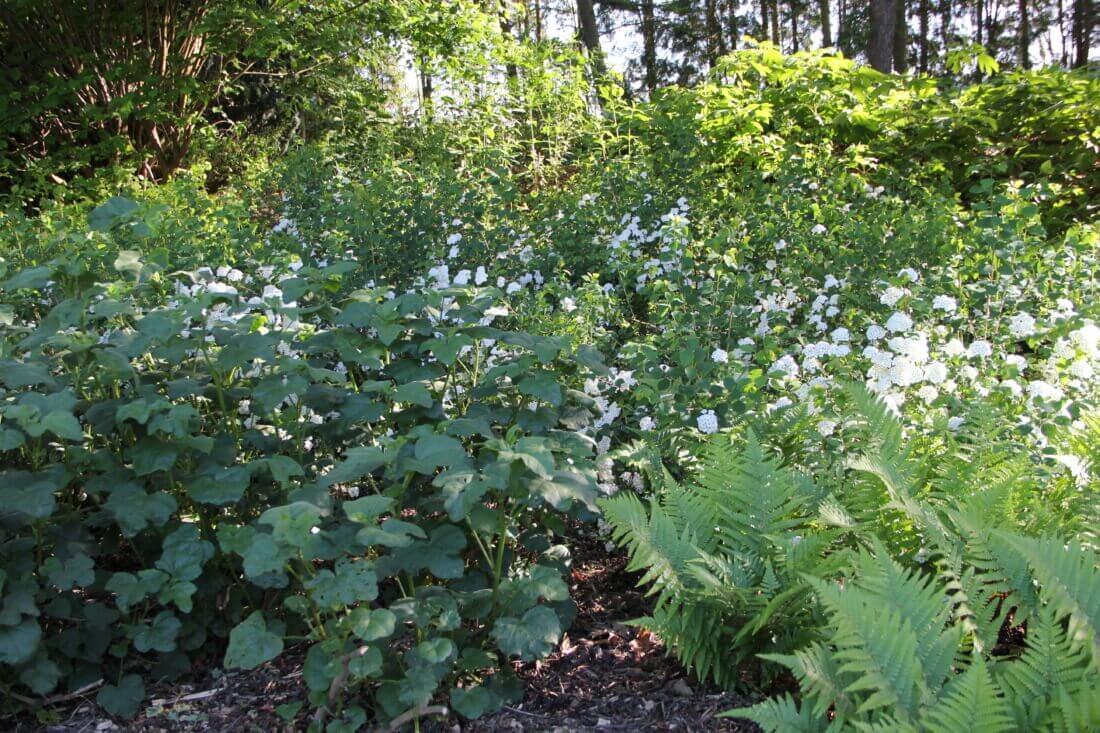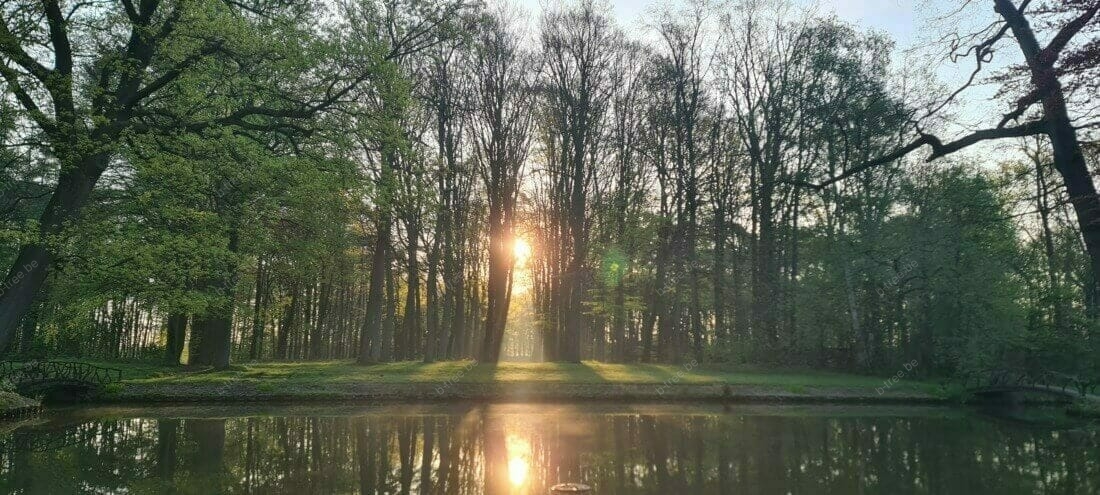




Why climate adaptive garden and is more biodiversity better?
Why a climate-adaptive garden at your home?
Switch to flowery borders and the right tree species
An ecological approach for more biodiversity
Because climate change is simply a fact. And we are all confronted with more extremes. That is why an ecologically well-thought-out garden that is climate-adaptive and provides more biodiversity is the best solution.
This is to directly improve your quality of life, even in your home.
And then sometimes it is necessary to make a switch with you current type of garden and gradually make them climate-adaptive.
Traditionally, lawns are an essential feature of gardens.
However, in light of current climate change and declining biodiversity, another realization is also growing. Because we know that from 1970 to now, biodiversity has decreased by more than 67%.
There is increasing awareness that flowery borders with native plant species are a valuable alternative to the traditional lawn.
For example, on this web page we discuss the benefits of reducing lawn area. And creating flowery borders.
With a focus on biodiversity and climate adaptation
We also look at how we can help you arborist can help as a reliable climate garden coach.
And there we as arborist the more knowledge we have about trees, we have the advantage that we will not cause any damage to existing trees during the switch.
As there is all too often root damage is caused during garden work. With all its consequences, even decades later.
And we also know, for example, what the final image of a certain tree species is.
Also something that is often sinned against. Which means unnecessary money spent on it later pruning the trees must be issued.
The climate-resistant garden promotes biodiversity
Various plants for various insects and animals: flowery borders with native plants provide a variety of food sources and habitats for various insects, such as bees and butterflies, as well as birds.
By increasing biodiversity in your garden, you contribute to the conservation of natural ecosystems.
Pollinator support: Pollinators play a crucial role in plant pollination and food production.
Flowery borders attract bees and butterflies, making them essential for the development of fruits and seeds in plants. Which in turn ensures the reproduction of plants. And that also applies to food crops.
Natural pest control: a flowery garden attracts natural enemies. Such as ladybugs and parasitic wasps.
These help control harmful insects without the use of harmful pesticides.
One insect is a predator of another.
And so they keep each other under control and no insect plague arises.
This is also the case with fungi, for example.
De Trichoderma species, often non-pathogenic fungi, support the plants by entering into a symbiosis with them.
And in this way keep disease-causing fungi out.
Trees also bloom, they are the cornerstones of your climate-adaptive garden
Trees also flourish, it is not just shrubs or bushes that contribute to biodiversity.
They are the cornerstones of the corridors for flying insects. And they can house up to hundreds of different species of insects.
If trees want to produce seeds and fruit, they must first bloom.
In addition to fruit trees and ornamental trees, pine, oak, lime and beech are also an important source of nectar. Just think of pine honey and acacia honey.
Planting trees in the context of a climate-adaptive garden is therefore also very important.
Not just about improving biodiversity. But also to protect the soil against direct sunlight.
And notice that trees produce sugars through photosynthesis in their leaves, and also feed the soil food web with some of these sugars produced.
In this way, trees support the fungi and bacteria in the soil. Which in turn provide food for all plants, herbs and grasses.
If you choose flowering or flowering to plant trees, be sure to ask expert tree advice us and choose the right strain for you Outdoor.
Climate adaptive garden with water management

Castle garden with park and large pond. The pond buffers the water in extreme weather conditions and is thus a source of life, both inside and outside its banks. The water level can be regulated by means of a lock.
Reduce heat island effect: In urban areas, an abundance of paved surfaces and lawns can lead to the heat island effect.
Trees with a large canopy cover or crown projection and flowery borders can counteract this effect. By providing shade. And by providing cooling due to the evaporation of water through their leaves.
Water retention: trees and flowery borders, together with their well-suited growing area design, help collect and retain rainwater.
This means that on the one hand there is less runoff from rainwater and storm water. And so the risk of flooding decreases. And which, on the other hand, replenishes the groundwater level.
Drought Tolerance: native plant species are normally well adapted to local conditions.
But because of the occurrence of more extreme heat days, and this for longer consecutive periods, some native plants are insufficiently resistant to the drought that this entails.
The choice of more drought-resistant species and better design of growing areas will together ensure that these plants require less water after their first establishment phase, and afterwards. This makes your garden more climate-adaptive.
b‑Tree Tree Care as your climate garden coach
Expertise in native plants and trees: b-Tree Tree Care has extensive knowledge of native plant species and can advise you on which trees and plants thrive best in your specific environment.
Garden design: As a climate garden coach, b-Tree Tree Care can help you design your garden.
By planting the right tree species and accompanying flowery borders, we create an attractive, biodiverse and climate-friendly garden.
Maintenance and care: b-Tree Tree Care can guide you in maintaining your climate-adaptive garden. And provide you with efficient tips and techniques to ensure your garden thrives. And you save a lot of money on maintenance costs compared to a classic garden.
What about the maintenance and sustainability of a climate-adaptive garden?
There are many benefits associated with a climate-adaptive garden in terms of maintenance and sustainability. Far too little attention is paid to this. You spend less time on maintenance than with a classic garden. And it is better for sustainability. Both for the environment and for nature.
What maintenance does a climate-resistant or climate-adaptive garden need?
Management of flowery borders
Although flowered borders require less intensive maintenance than lawns, it is still important to manage them properly.
Dead flowers and spent plants can be removed to stimulate flowering. And to improve light penetration into the plant.
By letting the prunings dry you can harvest the seeds for the next year. Or if you let them dry on site, for natural spread.
Composting
Using compost and organic mulch in tree stands and borders can help improve soil structure. And also stimulate soil life and retain nutrients and water. Which in turn contributes to a sustainable and healthy climate-adaptive garden.
Water management
Also consider using rainwater harvesting systems to meet the water needs of your flowered borders. This reduces the impact on precious drinking water.
Also arrange your growing areas in such a way that rainwater and stormwater runoff is not possible. But this water is suddenly collected in the growing areas of your flowery borders and tree mirrors.
Avoid chemical pesticides
As part of a sustainable approach, it is best to avoid the use of chemical pesticides. Because these are harmful to insects, the plants you spray them on, soil life, weaken your plants, etc. And therefore damage the biodiversity in your garden.
Also consider how much time lawn maintenance takes
To weigh it up, we would like to mention how much maintenance the lawn requires.
You should mow a lawn weekly during the growing season. And if you do this with a lawn machine or riding mower, the machines require maintenance and fuel. The knives must also be sharpened in a timely manner.
And in the autumn you will scarify your lawn again and remove the dry grass. You will also sow again.
And in addition to fertilizing in the spring, you will also lime the lawn at some point during the year.
Remember that all this maintenance not only costs time, but also money for machines, drainage, fertilizers and lime. Remember that a climate-adaptive garden requires much less maintenance and money.
Less is more in this case.
Creating an educational garden
Increase awareness: climate-adaptive gardens with flower-rich borders with native plants offer an excellent opportunity to raise awareness about biodiversity, native flora and climate change. Your garden can serve as an educational and inspiring place for family, friends and local residents.
Involving local community: As a climate garden coach, b-Tree Tree Care can help you organize educational events and workshops to involve the local community in the value of flowery borders and sustainable gardening.
A climate-adaptive garden stimulates life
Reducing lawn use and planting the right tree species and creating flowery borders with native plants are important steps towards promoting biodiversity. And making your garden resilient to challenging climate change.
Creating flowery borders with native plants offers numerous benefits.
Both in terms of biodiversity and climate adaptation.
By making the transition from traditional lawns to flowery borders, you create a natural oasis. Which attracts pollinators, beneficial insects and birds. Your garden becomes more resilient to climate change.
And helps with water management and reduces the heat island effect.
As a climate garden coach you can b‑Tree Tree Care guide you in the design, construction and maintenance of your flowery garden.
Together we can have a positive impact on the environment and our living environment, while providing educational opportunities to inspire others to practice sustainable gardening and increase biodiversity.
Let's work together towards a greener, more biodiverse and climate-friendly future for our gardens and our planet.
Contact us without obligation for a climate-resistant garden
Do you have to ask about climate-adaptive gardens, climate-resistant tree species or the switch to a climate-adaptive garden, do not hesitate to contact us can be contacted without obligation.
Other useful links
Garden maintenance and tips for a maintenance-friendly garden
Protecting trees on the construction site
Monitoring and irrigation of trees during well drainage on construction sites
Tree inspection, VTA check and MTA check
Tree management and drawing up a tree planTree appraisal or valuation of trees